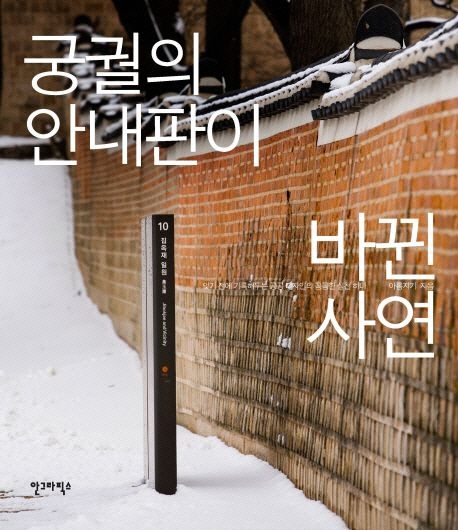The Arumjigi Foundation is a non-profit organization established in November 2001, dedicated to creatively preserving and passing down Korea’s traditional culture. Its mission is to rediscover the identity of Korean culture and cultivate new cultural heritage for future generations. Through efforts to care for Korea’s traditional cultural heritage and its surrounding environments, Arumjigi seeks to ensure that the values of tradition remain alive in modern life across clothing, food, and shelter. Arumjigi engages in a wide range of activities, such as maintaining the environments of Changdeokgung Palace and Jongmyo Shrine, beautifying the surroundings of old trees, designing signage for the Four Royal Palaces and Jongmyo Shrine, as well as for Haeinsa Temple, Hahoe Village, and Yangdong Village. It also hosts programs like the Arumjigi Academy, world heritage tours, special exhibitions, traditional music performances in hanok (traditional Korean houses), and research into traditional lifestyles. By operating hanok in Anguk-dong, Seoul, and Hamyang, Gyeongsangnam-do, Arumjigi enhances the value of hanok and explores innovative ways to utilize them. Moving forward, the foundation aims to explore the essence of Korean culture that connects the past, present, and future, setting exemplary cases for the modern inheritance of tradition.
Authors
Arumjigi
재단법인 아름지기
다른 사람들
-
Pen name Kim Sia. Université Sorbonne Nouvelle, Paris-III is a PhD candidate in French Modern Literature under the supervision of Prof. Serge Martin. She is also a writer on picture book criticism and European special education.
-
Sung Sang-woo
Graduated from Waseda University, Department of Architecture. After working at several design offices, he founded a0100z space design with his life partner in 2009. Currently, he is building a series of houses called ‘House with a Worn Threshold’ and ‘Together’, and runs Jeongchu Seodang in Yongsu Village, Yongin, where he talks about humanities and gives a lecture on humanities architecture called ‘House is Meaning’. -
Peter Troxler
An independent researcher and concept developer, he focuses on the overall composition and design of the social, technological, and commercial dimensions of businesses. His work pays particular attention to companies as permanent organizations and projects as temporary organizational structures. -
Youngwon Park
He majored in Visual Design at Hongik University and went on to study Advertising Design and Visual Communication at the Graduate School of Industrial Arts at Hongik University and the School of the Art Institute of Chicago (SAIC). While studying signage and symbols at the University of Illinois at Chicago, he explored a semiotic approach to design research. He later earned a Ph.D. in Fine Arts from Hongik University, where he analyzed visual humor through semiotics. He has contributed to the … -
Tsuzuki Kyoichi
Kyoichi Tsuzuki was born in Tokyo in 1956. From 1976 to 1986, he was a freelance editor for the influential men’s fashion and lifestyle magazines Popeye and Brutus, where he wrote on contemporary art, design, urban living, and related topics. From 1989 to 1992, he published Art Random (Kyoto Shoin), a 102-volume series covering 1980s trends in global contemporary art. He continues to write and edit works on contemporary art, architecture, photography, design, and more. In 1993, he released the … -
Ahn Sang-soo
Ahn Sang-soo is a graphic designer and typographer with a keen interest in Korean visual culture. He studied in the Visual Communication Design Department at Hongik University, where he also completed his graduate studies. A former professor at his alma mater, he took early retirement in 2012 to establish the Paju Typography Institute, where he currently serves as the president, also known as ‘Nalgae.’ In 2007, he received the Gutenberg Prize from the city of Leipzig, Germany. He is also a … -
Yang Ye-kyu
Graduated from Dongduk Women’s University College of Arts, Department of Visual Design and its graduate school, and completed the web design course at Fashion Institute Technology (F.I.T) in New York, USA. Worked as a designer at the advertising production team of Samhee Planning Co., Ltd., the predecessor of advertising agency Hancom Co., Ltd., and taught CI and computer graphics at Dongduk Women’s University Department of Visual Design. Currently working as the head of the design … -
AeLe Family
The family is made up of Ko Kyung-ae, a painter, and Lee Sang-wook, a semiconductor researcher, along with Jun Sung-seong, Eun-sol, and their dog Corbusier. After working for President Kim Dae-jung’s presidential secretariat and the Consulate General of the Republic of Korea in Sendai, Japan, Ko Kyung-ae became a self-taught painter and held three solo exhibitions in Japan and one in Korea. After experiencing the Great East Japan Earthquake in 2011, she changed her outlook on life and … -
Ahn Hye-shin
Ahn Hye-shin graduated from the Department of Information Design at Ewha Womans University and the Graduate School of Industrial Design at the same school, and received her PhD in Industrial Design from the University of Duisburg-Essen, Germany. Since 2013, he has been the head of the Public Design Foundation and an adjunct professor at the Department of Techno-product Design at Hanyang University. -
Erik Spiekermann
Erik Spiekermann is a German typographer, designer and writer. He is an honorary professor at the University of the Arts Bremen and ArtCenter College of Design. -
Shin Hee-kyoung
Specialized in Visual Design and Design Theory at Seoul National University and its graduate school. As a recipient of the Japanese Ministry of Education scholarship, earned a master’s degree from Musashino Art University and a Ph.D. in Art from the Department of Design at Nihon University. After serving as a researcher at Musashino Art University, currently works as a professor in the Department of Visual Design at Semyung University while actively pursuing art, including two solo exhibitions. … -
Lee Jeong-eun
Lee Jeong-eun received her master’s degree from the Graduate School of Architecture at the University of California, Los Angeles (UCLA). She worked at RTKL, MAD, and Callison, where she participated in many large-scale mixed-use projects in China. He is currently a designer at the architectural firm AUD.
